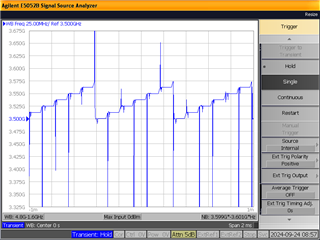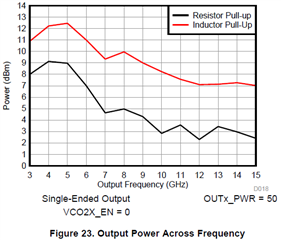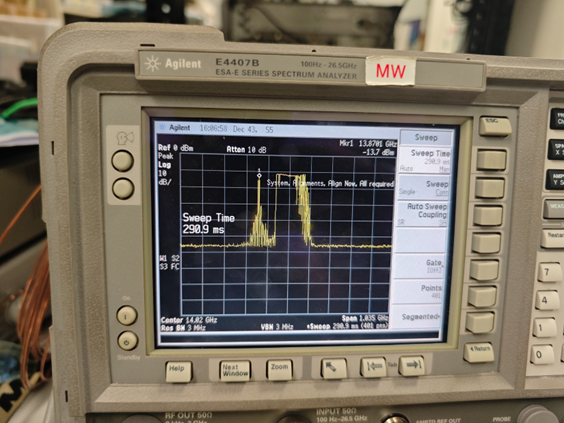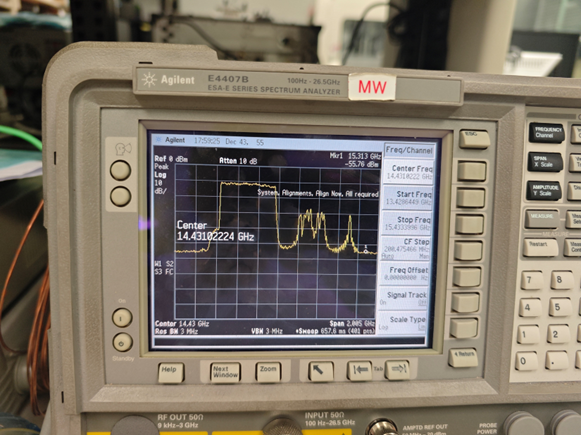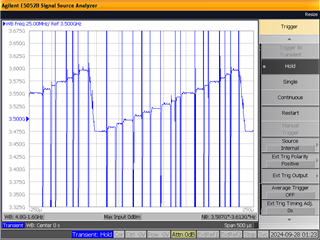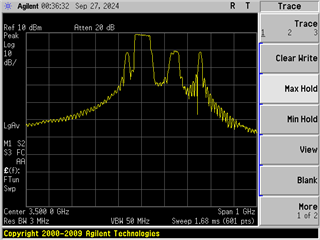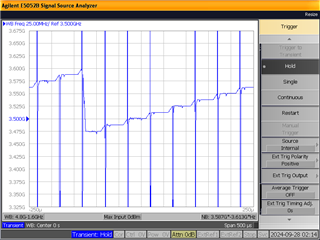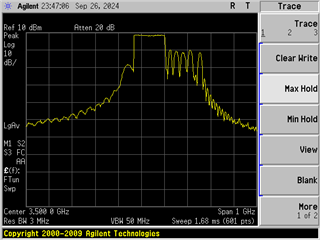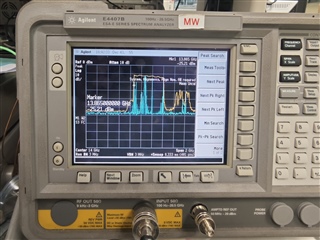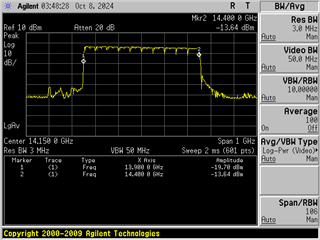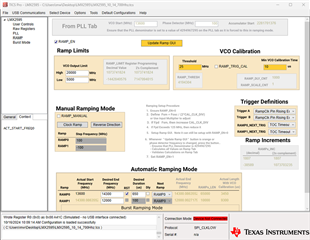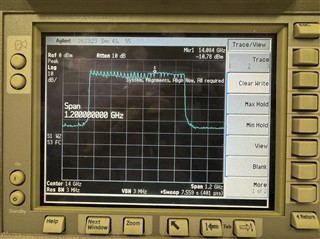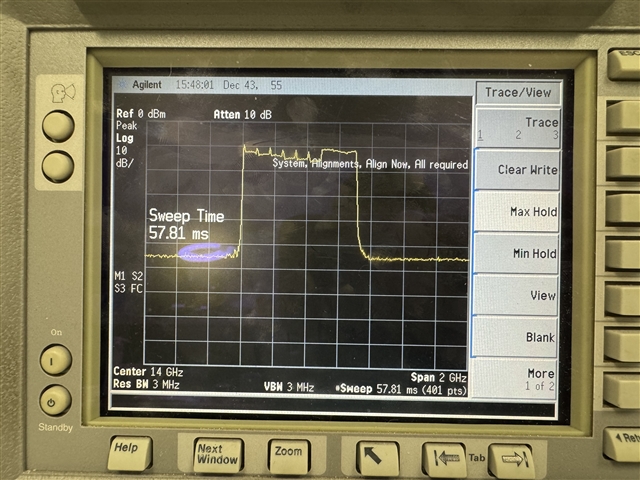Tool/software:
Dear TI's engineers
It is found that there is a spur before a swept-frequency signal with the automatic mode of LMX2595evm. The configurations of PLL, RAMP, and the output of the spectrum analyzer are attached below. Our questions are,
- how to remove the spur from the output spectrum;
- how to increase the output power because it now is about -3dBm and cannot meet our requirements.
Besides, in our experiments, I don't know why the LED light D1 is unstable, and the output frequency is not the same under the same configurations.
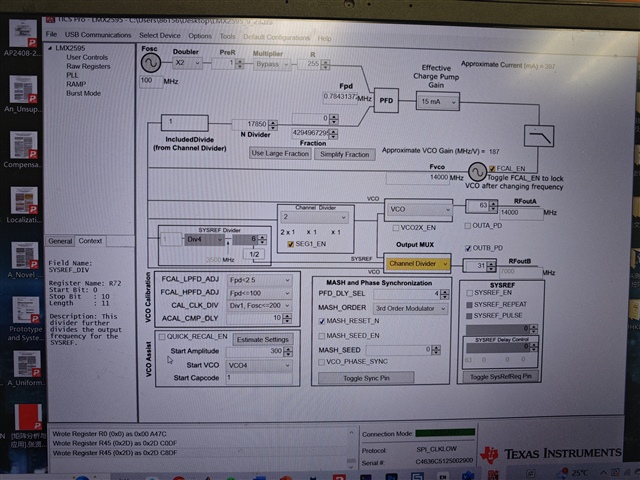
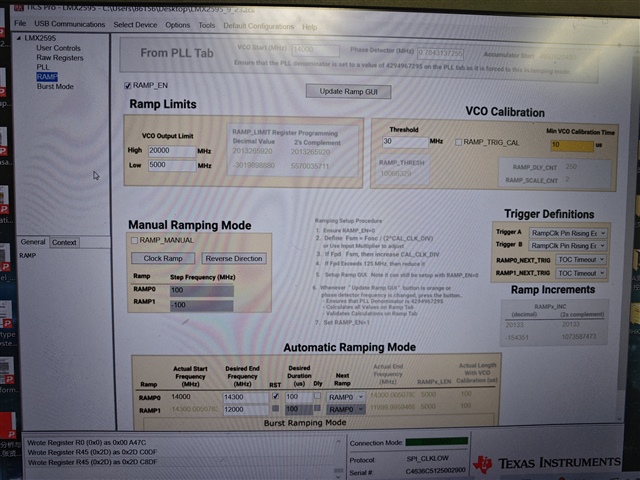
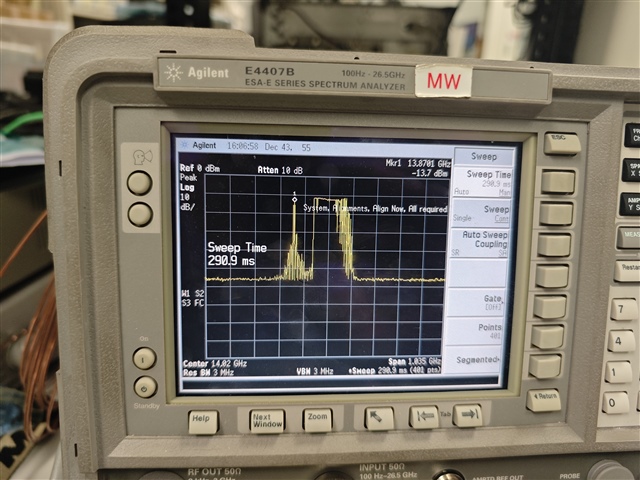
Best regards,
Jaffrey


